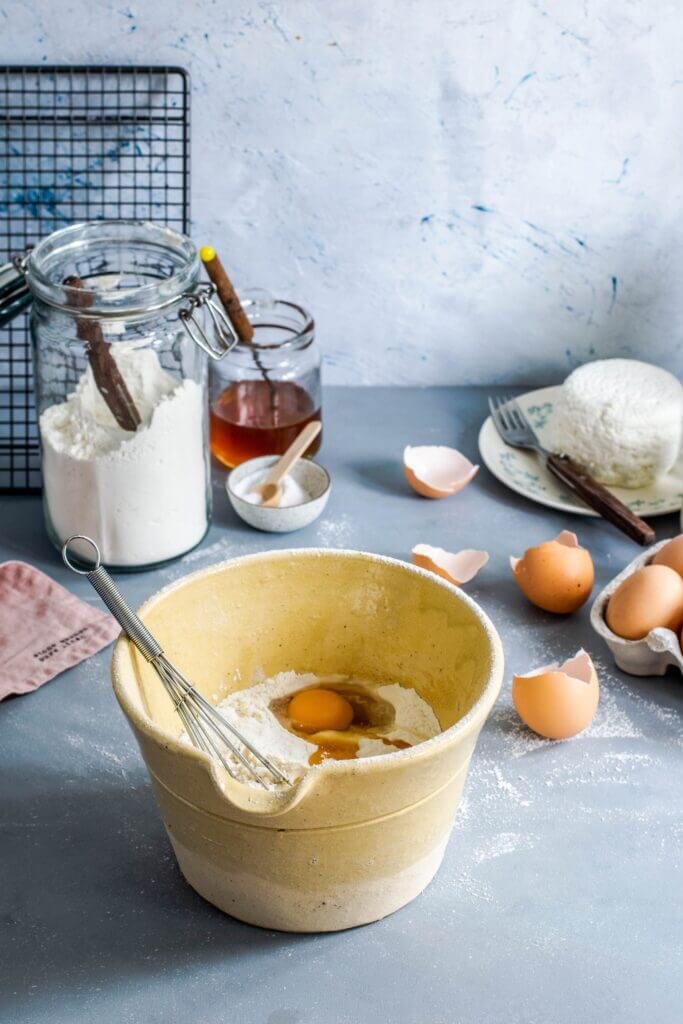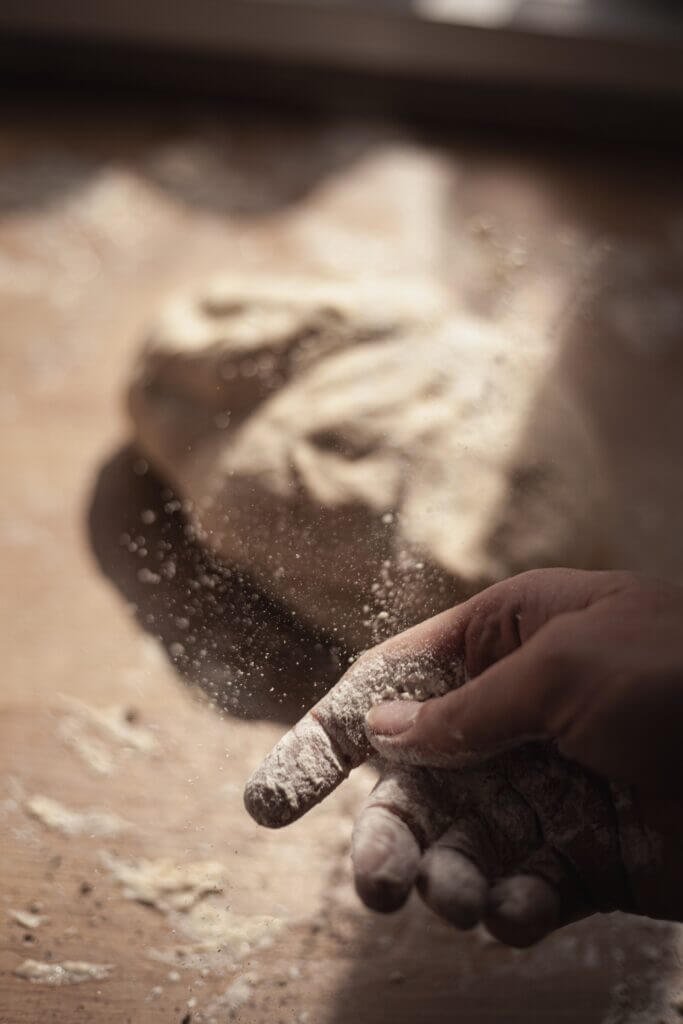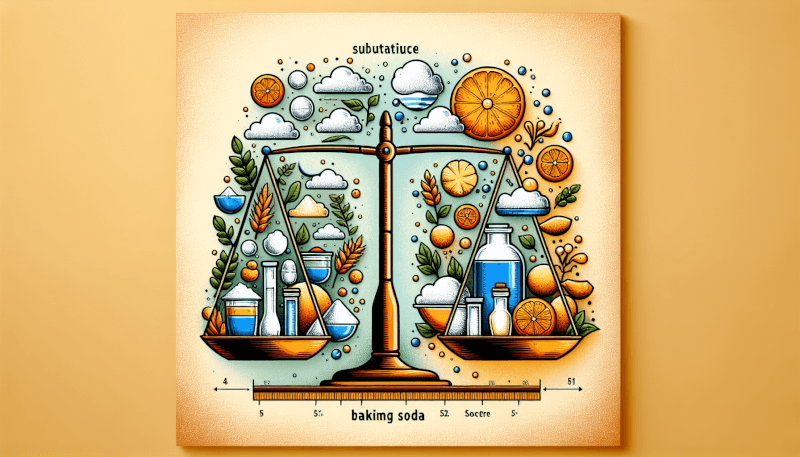Have you ever found yourself confused in the kitchen, unsure of whether to reach for baking powder or baking soda? Well, fear not, because we are here to shed some light on the matter! While both baking powder and baking soda are commonly used in baking, they have distinct differences that can greatly affect the outcome of your favorite recipes. In this article, we will explore the unique properties of each ingredient and explain when to use them, so you can confidently create delicious treats every time you step into the kitchen. So, let’s get started and unravel the mystery behind baking powder and baking soda!

Chemical Composition
Baking Powder
Baking powder is a leavening agent that is used in various baked goods to help them rise. It is made up of a combination of baking soda, cream of tartar, and a moisture-absorbing agent like cornstarch. These ingredients work together to create a chemical reaction when combined with liquid, heat, or an acid, resulting in carbon dioxide gas being released. This gas helps to create air bubbles in the batter, causing the baked goods to expand and become light and fluffy.
Baking Soda
Baking soda, also known as sodium bicarbonate, is a white crystalline powder that is commonly used in baking. It is a pure form of sodium bicarbonate and is a stronger leavening agent than baking powder. When baking soda is combined with an acid, such as buttermilk, yogurt, or lemon juice, it produces carbon dioxide gas, which helps to leaven the dough or batter. The reaction between the baking soda and the acid is immediate, so it is important to bake the goods soon after mixing to ensure the full effect of the leavening agent.
Reaction Mechanism
Baking Powder
Baking powder undergoes a two-step reaction when exposed to heat or liquid. The first reaction occurs when the moisture in the batter dissolves the acid (cream of tartar) in the baking powder, releasing carbon dioxide gas. The second reaction takes place when the batter is heated in the oven. The heat causes the remaining baking powder ingredients (usually baking soda and cornstarch) to react, producing additional carbon dioxide gas. This double reaction helps create a more prolonged leavening effect, resulting in a lighter and fluffier texture in the baked goods.
Baking Soda
Baking soda reacts immediately with acids, producing carbon dioxide gas. When baking soda is combined with an acidic ingredient, such as buttermilk or vinegar, the chemical reaction begins, and bubbles of carbon dioxide gas are released. These gas bubbles get trapped in the dough or batter, causing it to rise and become lighter in texture. It is important to remember that the reaction between baking soda and acid is instantaneous, so it is necessary to bake the goods promptly after mixing the ingredients to maximize the leavening effect.

Leavening Agent
Baking Powder
Baking powder is a chemical leavening agent that helps dough or batter rise by releasing carbon dioxide gas. It is a convenient option for baking as it already contains both an acid (cream of tartar) and a base (baking soda), eliminating the need to add additional acids to the recipe. Baking powder is often used in recipes that do not already contain acidic ingredients, such as cakes, cookies, and pancakes.
Baking Soda
Baking soda is a single-ingredient leavening agent that relies on an acidic ingredient to activate its leavening properties. It is commonly used in recipes that already contain an acidic ingredient, such as buttermilk, yogurt, or citrus juice. Baking soda is known for its strong leavening power, making it ideal for recipes that require a quick rise, such as certain bread and muffin recipes.
Acidity
Baking Powder
Baking powder contains an acidic component, typically cream of tartar, which reacts with a base (baking soda) to produce carbon dioxide gas. The acidity of baking powder is crucial for its functionality as a leavening agent. It is important to use the appropriate amount of baking powder in a recipe to ensure that the right balance of acid and base is present for optimal leavening.
Baking Soda
Baking soda is an alkaline compound, and its leavening properties are activated when it comes into contact with an acid in the recipe. Without an acid, baking soda alone cannot produce the desired leavening effect. It is crucial to pair baking soda with an acidic ingredient to create the necessary chemical reaction and release carbon dioxide gas.

Use in Recipes
Baking Powder
Baking powder is a versatile leavening agent that is widely used in baking recipes. It is commonly used in cakes, cookies, muffins, and quick breads. When a recipe does not already contain an acidic ingredient or when the desired rise time is longer, baking powder is the preferred choice as it provides a more controlled and consistent leavening effect.
Baking Soda
Baking soda is primarily used in recipes that already contain an acid ingredient, such as buttermilk, lemon juice, or yogurt. These acidic ingredients react with baking soda to produce carbon dioxide gas, causing the dough or batter to rise. Baking soda is often used in recipes that require a quick rise, such as certain bread, pancakes, and some types of cookies.
Taste
Baking Powder
Baking powder does not contribute significantly to the taste of the final baked goods. Its purpose is primarily to leaven the dough or batter, creating a light and fluffy texture. However, when used in substantial amounts, baking powder may leave a slightly bitter or metallic aftertaste. It is important to follow the recommended measurements to avoid any undesirable flavors.
Baking Soda
Baking soda can add a slightly bitter or soapy taste to the final baked goods if not used in the correct amounts or balanced with acidic ingredients. It is essential to use baking soda in recipes that already contain an acid to ensure a proper reaction and avoid any unpleasant flavors.

Storage
Baking Powder
Baking powder should be stored in a cool, dry place to maintain its effectiveness. The container should be tightly sealed to prevent moisture absorption, as any moisture can activate the leavening agents prematurely. It is recommended to check the expiration date on the packaging and replace the baking powder after it has expired to ensure optimal leavening results.
Baking Soda
Baking soda should be stored in an airtight container in a cool and dry place. Exposure to moisture can cause the baking soda to clump or lose its leavening power. It is essential to check the expiration date on the packaging and replace the baking soda if it has expired or is no longer active.
Substitution
Baking Powder
In recipes that call for baking powder, it is generally not recommended to substitute it with baking soda. Baking powder contains both an acid and a base, while baking soda alone is a base. However, in a pinch, you can create a homemade baking powder substitute by combining one part baking soda with two parts cream of tartar.
Baking Soda
If a recipe calls for baking soda, it can be challenging to substitute it with baking powder directly. Baking soda requires an acidic ingredient to activate its leavening properties, while baking powder already contains an acid. To substitute baking soda with baking powder, you will need to adjust the other acidic ingredients in the recipe to maintain the right balance. It is always best to follow the recipe instructions or find a specific substitution guide for your specific needs.
Health Concerns
Baking Powder
When used in moderation and as directed, baking powder is generally safe for consumption. However, some individuals may be sensitive to the ingredients in baking powder, such as cornstarch or cream of tartar. People with specific dietary restrictions or allergies should read the ingredient label carefully or opt for alternative leavening agents.
Baking Soda
Although baking soda is safe to consume in small quantities, it is essential to use it in moderation. Consuming excessive amounts of baking soda can lead to imbalances in the body’s pH levels and electrolytes, causing digestive issues or other health concerns. It is crucial to follow the recommended measurements and consult a healthcare professional if you have any underlying health conditions.
Common Culinary Uses
Baking Powder
Baking powder is a staple in baking recipes, including cakes, cookies, muffins, and pancakes. It is often used in recipes where the rise time is longer or when the desired texture is light and fluffy.
Baking Soda
Baking soda is commonly used in recipes that already contain an acidic ingredient, such as buttermilk or citrus juice. It is often used in quick bread recipes, biscuits, certain cookie recipes, and as a leavening agent in homemade pizza dough.
In conclusion, while baking powder and baking soda are both leavening agents used in baking, they have distinct differences in their chemical composition, reaction mechanisms, and culinary uses. Baking powder contains both an acid and a base, providing a controlled and consistent leavening effect, while baking soda relies on an acidic ingredient to activate its leavening properties. Understanding the differences between these two ingredients is crucial to achieve the desired results in your baking endeavors.


